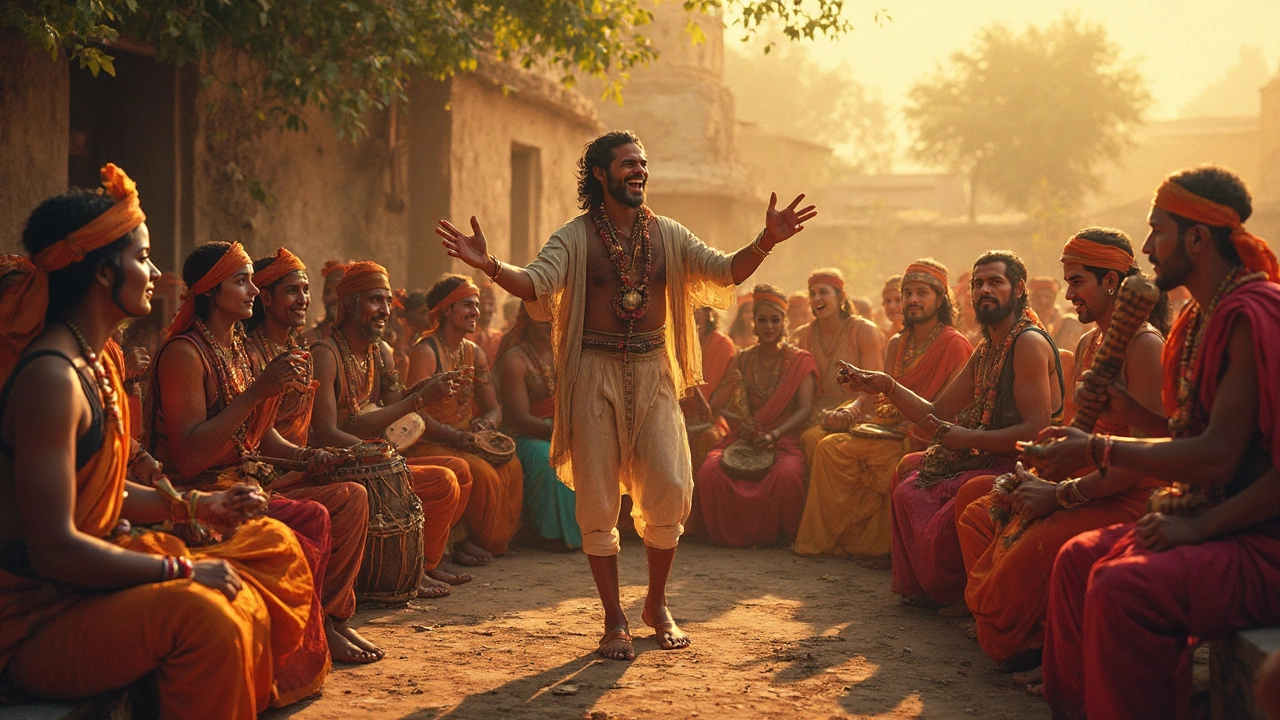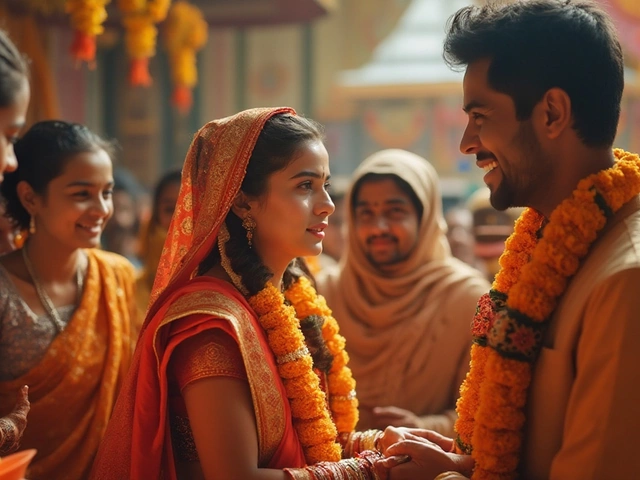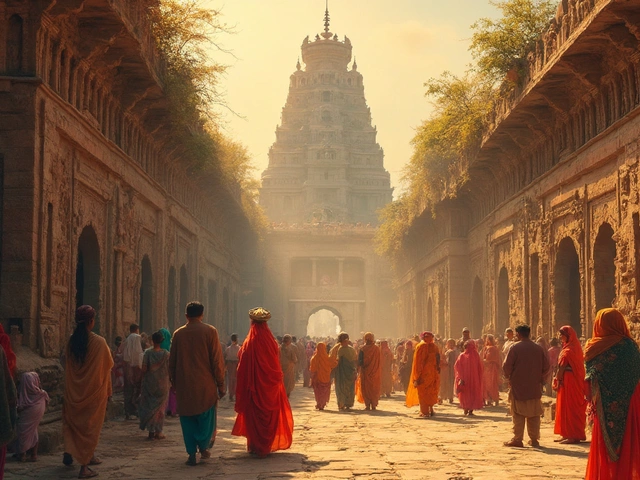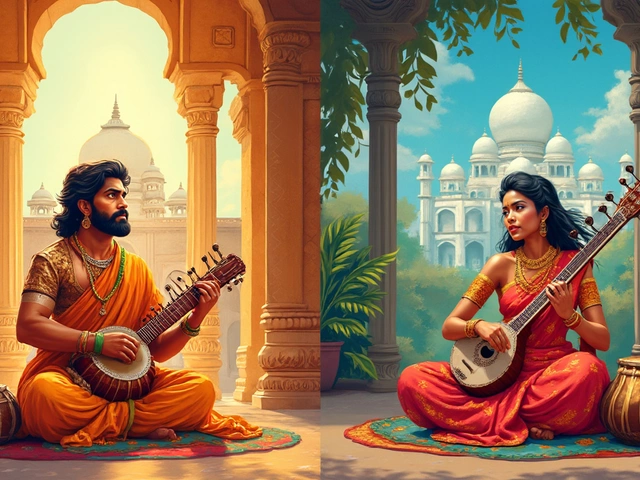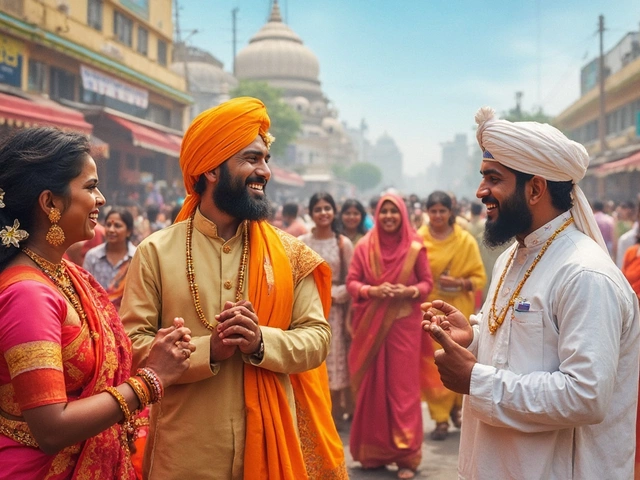Ask anyone about Indian music and you’ll probably hear big Bollywood names, but folk music is where the real roots run deep. The question—who is the king of folk song?—isn’t as simple as crowning a pop star. In India, every region has its own folk champion, and naming one king is a bit like settling a family debate over who makes the best chai.
Still, a handful of artists have shaped, modernized, and kept these traditions alive. Their voices echo through village celebrations and city music festivals alike. If you want to understand who truly stands out, you’ll need to get past the flashy performances and look at who really connects everyday life with music.
One thing’s clear: Indian folk isn’t just old tunes played on dusty instruments. It’s a living, raw soundtrack for everything from harvests to heartbreaks. If you don’t know where to start finding real folk legends, stick around—there’s plenty to unpack, and you’ll be ready to impress your friends before the next wedding season hits.
- What Makes Someone the King of Folk Song?
- Top Contenders: Indian Folk Legends
- Hidden Stars Beyond Bollywood
- How to Spot Real Indian Folk Music
- Get Started: Essential Tracks and Where to Listen
What Makes Someone the King of Folk Song?
Crowning someone as the king of folk song isn’t just about who has the loudest voice or the biggest crowd. In India, it’s about authenticity, impact, and trust. Folk singers aren’t just entertainers; they’re keepers of tradition, storytellers, and local heroes. The one who gets called the king is usually someone who checks a few essential boxes:
- Deep Connection to Roots: The best folk singers stick close to local stories, dialects, and instruments. Take Bhupen Hazarika from Assam—his songs feel like you’re walking through the Brahmaputra valley.
- Popular Across Regions: It’s not enough to be a big deal in your own village. The real king has people humming his tunes across states. That’s why someone like Gurdas Maan is legendary—his Punjabi tracks have fans all over north India and beyond.
- Years in the Game: Longevity matters. Legendary folk artists often spend decades preserving and tweaking old melodies. For example, Ila Arun has kept Rajasthani traditions alive on the national stage for over 40 years.
- Influence on Culture: Their songs go beyond entertainment—they shape festivals, inspire younger musicians, and sometimes even drive social change. Consider how Indian folk songs like "Heer" or "Dama Dam Mast Qalandar" pop up at every celebration.
If you want stats, here’s a rough look at how popular folk music is compared to mainstream Indian music:
| Genre | Estimated Annual Listeners (India) | No. of Regional Variants |
|---|---|---|
| Folk Music | 100 million+ | 500+ |
| Bollywood Music | 300 million+ | 10-15 major styles |
Those 500+ regional variants? That’s why pinning down one indian folk songs king is so tough. Real royalty in this world isn’t handed out by TV shows or big music labels—it’s earned through years of representing people, times, and places. So, when people call someone the king, it’s usually a nod to how much they’ve meant to their community and the country.
Top Contenders: Indian Folk Legends
When people talk about legends in indian folk songs, a few names spark instant respect across generations. These folks aren't just local stars; they're icons who've brought regional music to a national and even global audience. Let’s dig into the ones with the strongest claim to the folk throne.
1. Gurdas Maan—Ask any Punjabi and Gurdas Maan is probably on top of their playlist. Known for timeless hits like “Dil Da Mamla Hai,” his voice is the soul of modern Punjabi folk. He’s won multiple national awards, and his live shows attract massive crowds, from rural festivals to international arenas.
2. Bhupen Hazarika—From Assam, Hazarika is a legend who made folk songs bridge cultures. His song “Bistirno Parore” is famous not just in the Northeast but all over India. Beyond singing, he wrote, composed, and even made films around folk themes. He was honored with the Bharat Ratna in 2019, India’s highest civilian award.
3. Teejan Bai—If you’ve never seen a Pandavani performance, you’re missing out. Teejan Bai from Chhattisgarh took this epic storytelling style from village squares to world stages like London’s Royal Albert Hall. Her powerful singing and dramatic narrating style earned her a Padma Vibhushan and fans everywhere she goes.
4. Mame Khan—Representing Rajasthan, Mame Khan mixes ancient Manganiyar traditions with newer sounds. His “Chaudhary” performance rocked Coke Studio and opened the doors to mainstream listeners. He keeps traditional Rajasthani folk (like Maand and Bhajans) relevant for young crowds.
| Name | Region | Signature Song/Style | Major Awards |
|---|---|---|---|
| Gurdas Maan | Punjab | Dil Da Mamla Hai | Padma Shri, National Award |
| Bhupen Hazarika | Assam | Bistirno Parore | Bharat Ratna, Dadasaheb Phalke Award |
| Teejan Bai | Chhattisgarh | Pandavani | Padma Vibhushan |
| Mame Khan | Rajasthan | Chaudhary (Maand, Bhajan) | Best Folk Single (GIMA) |
If you’re exploring folk hits, put these names at the top. Their songs show just how diverse—yet universally awesome—Indian folk music can be. No single king here, but these legends definitely wear the crown in their regions.
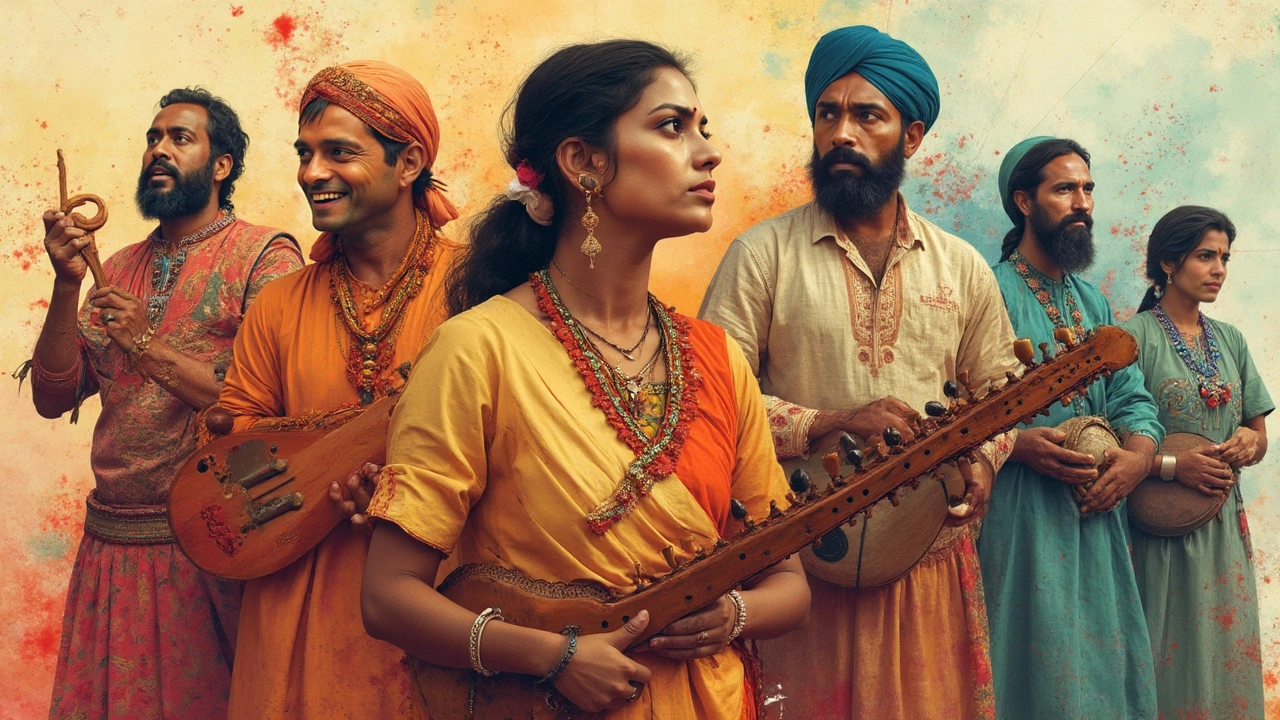
Hidden Stars Beyond Bollywood
Most people think of catchy movie hits when talking about Indian music. But there’s a whole world of folk artists out there who barely show up in movies, yet have massive fan bases and huge impact locally. These musicians are the backbone of indian folk songs—preserving stories no Bollywood scriptwriter could invent.
Take Mame Khan from Rajasthan. He’s turned traditional Manganiyar songs like "Chaudhary" into stadium anthems. What’s cool is he didn't need a film to get noticed—his music videos grabbed millions of views just from word-of-mouth. Then there’s Kailash Kher, whose roots are in the folk traditions of Uttar Pradesh and Kashmir. Even though he’s brushed up against Bollywood, his big, raw voice was first known on folk circuits and Sufi gatherings.
Ever heard of Malini Awasthi? She's a household name in North India thanks to her mastery of Awadhi, Bundelkhandi, and Bhojpuri songs. She has performed across more than 40 countries, yet you'd rarely spot her in flashy film events. Another legend—Teejan Bai from Chhattisgarh. She makes the ancient Pandavani epic come alive, blending narration and song like it’s an intimate campfire story, yet she’s won both the Padma Shri and Padma Bhushan.
- Paban Das Baul represents Bengal’s Baul traditions and toured global festivals long before folk music was "cool."
- Prahlad Singh Tipaniya is a legend for Kabir bhajans—mixing folk and philosophical lyrics with a raw, earthy style.
- Zubeen Garg in Assam hops from folk to film, yet his Bihu festival songs are still his real claim to fame locally.
Folk stars might not boast Bollywood’s glitz, but their reach is no joke. Check out how many gigs, awards, and social followers some of these artists pull in, compared to mainstream movie singers:
| Artist | Region | Awards Won | Global Shows Played |
|---|---|---|---|
| Mame Khan | Rajasthan | Rajasthan Sangeet Natak Akademi, many folk awards | 50+ |
| Malini Awasthi | Uttar Pradesh | Padma Shri, Folk Music Awards | 40+ |
| Teejan Bai | Chhattisgarh | Padma Shri, Padma Bhushan | 30+ |
| Paban Das Baul | West Bengal | BBC World Music Nomination | 100+ |
If you want to support these artists instead of just humming along to soundtracks, try following their YouTube or Insta pages. Many do live Q&A sessions or even offer workshops on folk instruments. That’s how you get up close to the real kings and queens of Indian folk.
How to Spot Real Indian Folk Music
Here's the deal: Indian folk music isn't just a guy with a harmonium singing old songs. It goes way deeper. You can actually spot the real stuff if you know what to listen for and where to look. Let’s get you sorted.
- Local Languages: Folk songs are almost always sung in local dialects or regional languages. Rajasthani, Bhojpuri, Assamese—you name it. Bollywood tunes may borrow the vibe, but real folk isn't Hindi-dominated.
- Traditional Instruments: Watch out for instruments like the dhol, ektara, dotara, khartal, and algoza. If you hear auto-tune or slick guitar riffs, it's probably fusion or pop, not pure folk.
- Context of Performance: Folk music happens live—think weddings, harvests, monsoons, local festivals. If it feels like half the village is singing along, that’s a clue.
- Stories and Everyday Life: Lyrics are relatable. Farming, love, migration, even politics—folk songs usually talk about what’s happening in real life, not movie plots.
- Call-and-Response: In states like Maharashtra and Gujarat, you’ll spot choruses singing after every line. This group vibe is core to folk music.
Spotting true folk also means knowing who’s singing. Legendary folk artists usually stay close to their roots. For instance, Bhikhudan Gadhvi became famous by sticking to Gujarati Dayro traditions, while Teejan Bai took Pandavani from Chhattisgarh to the world stage—without Hollywood-style glitz.
| State/Region | Main Folk Instrument | Known Folk Artist |
|---|---|---|
| Rajasthan | Khamaicha | Mame Khan |
| West Bengal | Dotara | Purna Das Baul |
| Punjab | Tumbi | Surinder Shinda |
| Assam | Pepa | Pratima Barua Pandey |
| Chhattisgarh | Tumdra | Teejan Bai |
If you want to start listening to authentic indian folk songs, check out live festival recordings on YouTube—search for events like Rajasthan International Folk Festival or National Tribal Dance Festival. Real folk music feels raw around the edges, but that’s what makes it hit differently.

Get Started: Essential Tracks and Where to Listen
If you're new to indian folk songs, there's a ton of good stuff waiting for you. Forget everything you know about auto-tuned music—these songs pack real stories and sounds that haven't changed much for centuries. If you want your playlist to stand out, here’s what you need to hear first.
- Pardesi Pardesi (sung by Kumar Sanu, but rooted in Rajasthani folk)—A big hit, and probably the entry point for tons of listeners. It’s dramatic, catchy, and actually based on older folk melodies.
- Nimbooda Nimbooda—Originally from Rajasthan, this one was made famous by Ila Arun. It’s all about a playful, teasing vibe. Even Bollywood latched onto it, but the folk version is the real deal.
- Kesariya Balam—Think of this as the national anthem of Rajasthani folk. Vocals by Allah Jilai Bai stand out, and this track pops up in every major Rajasthani celebration.
- Bela Bose (by Manna Dey)—Coming from Bengal, this one mixes humor with regional flavor, and it’s stuck around for decades.
- Dharti Dhoran Ri—If you want to feel the desert life, this Marwari folk song tells stories of land, love, and the dry wind of Rajasthan.
- Chandaniya Lori Lori—A modern take, but with folk roots, it comes from the heart of Uttar Pradesh and works as a lullaby passed down generations.
Wondering where to actually find these tracks? Start with YouTube—it’s packed with original performances and newer covers. Spotify and Apple Music now have massive playlists for folk fans, especially under regional categories. Don’t skip Gaana and JioSaavn—these Indian platforms sometimes have recordings you won't find elsewhere. If you like hunting for old tapes or digital archives, All India Radio has a goldmine of archived folk recordings on their website.
If you’re serious about hearing these songs as locals do, search for regional folk music festivals online. Many are now live streaming their sessions, which means you can catch real folk music beyond just studio versions. It’s worth subscribing to a couple of folk musicians on Instagram or Facebook too, since many post short unplugged versions or jams from the road.
Start with these tracks and sources. Pretty soon, you’ll know the difference between a forced commercial song and the real flavor of Indian folk.
